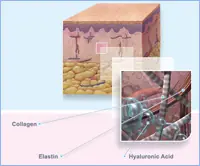
The appearance of wrinkles on the face, neck and hands is, unfortunately, an irreversible process, just as the aging process itself is irreversible. Human skin is designed in such a way that the fibers of the protein complexes of collagen and elastin, produced by connective tissue cells, form a kind of dense frame that provides significant elasticity to the skin. This is due to the functional property of these protein fibers to swell when moisture accumulates in their structure.
However, with age (starting from approximately 25 years), the processes of collagen and elastin production slow down, and existing proteins “wear out,” which leads to irreversible disruption of intramolecular bonds in the collagen-elastin framework and, as a consequence, to the inevitable loss of elasticity of the entire skin and deterioration of cellular nutrition.
Loss of elasticity, adverse effects of the external environment, poor diet, alcohol consumption and smoking - all this activates the aging process in the body, causing the appearance of wrinkles, hyperpigmentation and a number of skin tumors. Our article will discuss modern methods of combating wrinkles, based on laser therapy and similar non-surgical procedures.
Today, laser cosmetology allows not only to eliminate external signs of premature skin aging, but also to penetrate to the very essence of the problem - disruption of cellular nutrition and weak activity of renewal of the cellular composition of the epidermis, including the collagen-elastin framework. Among all existing non-surgical skin rejuvenation procedures, the following are the most widespread and received the greatest response from patients:
- laser biorevitalization;
- heating with neodymium laser;
- fractional photothermolysis;
- laser dermabrasion.
Each of these procedures is quite effective not only in terms of skin rejuvenation and wrinkle removal. These techniques are actively used in the correction of scars, in particular after acne, and in the elimination of skin hyperpigmentation.
Biorevitalization is one of the most effective procedures for injection rejuvenation of epidermal tissue, based on the systematic introduction of high molecular weight hyaluronic acid into the subcutaneous area. Laser biorevitalization is also based on the beneficial effects of hyaluronic acid complexes on the condition of tissues, but in this case, the main source of rejuvenation is a gel of low molecular weight hyaluronic acid, which is actively absorbed by the skin with additional thermal radiation from a multidiode laser.
Laser biorevitalization is indicated for patients with sensitive skin, which has already become noticeable signs of premature aging, such as:
- The presence of facial wrinkles;
- Obvious photoaging of the skin;
- Significant sagging and dry skin;
- Loss of skin elasticity.
As a result, after several procedures (on average, 2 to 6 procedures are required, depending on the age of the problem), the patient receives:
- visible reduction of wrinkles and deep folds;
- reduction of deep expression wrinkles;
- improvement of skin structure;
- reduction of pore sizes;
- increased skin hydration;
- improving the appearance of lips.

Modern cosmetologists have proven that when the deep layers of the dermis are heated to 65-70 degrees Celsius, connective tissue cells - fibroblasts - are stimulated to produce collagen. Among all the existing cosmetic lasers, the most suitable for this purpose is a laser based on yttrium aluminum garnet with neodymium doping or, more simply, a neodymium laser.
Neodymium heating allows you to fight such signs of premature skin aging as:
- Photoaging of the skin;
- Increased pigmentation;
- Wrinkles;
- Loss of firmness and elasticity;
- Flabbiness.
Wrinkle removal in this case occurs procedurally, that is, to achieve the desired result, it is necessary to carry out from two to several procedures for heating the deep layers of the skin. One of the advantages of this procedure is, of course, the increasing effect. In addition, it should be noted separately that there is no rehabilitation period.
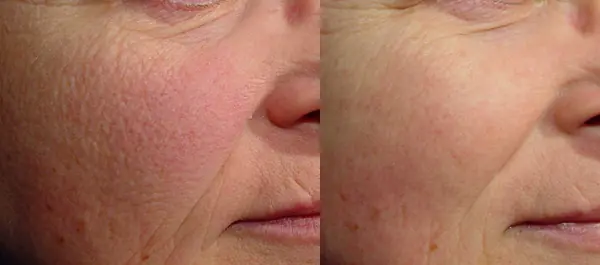
Perhaps the most famous and popular procedure for non-surgical skin rejuvenation, based on the fractional effect of laser radiation on biological tissue with the formation of so-called microthermal treatment zones. Among the large number of fractional photothermolysis procedures, the most widely used is the Fraxel technique, developed by Reliant Technologies Corporation. Read more about the Fraxel laser in the article “Selective and fractional photothermolysis. Fraxel”.
Indications for fractional photothermolysis:
- hyperpigmentation;
- wrinkles;
- sagging and loss of elasticity;
- photoaging;
- structural disorders in the dermis;
- scars of any origin.
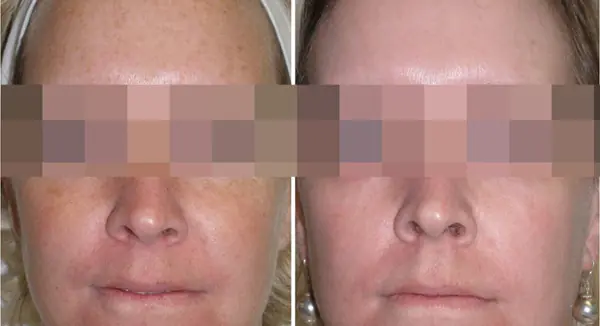
Laser dermabrasion is the most well-known wrinkle removal procedure. As a rule, its purpose is caused by the need to carry out fundamental changes in the epidermal structure, when the problem is of a pronounced, long-standing nature. Despite the wide variety of fairly effective analogues, laser resurfacing continues to be the most effective technique, due to the dramatic nature of its effect on the skin. However, this same fact makes this procedure very serious for both the doctor and the patient with a large number of complications.
Wrinkle removal using this method is carried out using a carbon dioxide laser, when the upper, keratinized layer of the epidermis is almost completely removed through warm exposure. Read more about the CO2 laser in the article “Carbon dioxide laser as the most common laser in cosmetology.” Of course, the trauma from such a procedure is very high, but this allows for a complete renewal of the upper layer of the skin, restoring the intramolecular bonds of the collagen-elastin framework. Laser resurfacing allows you to completely eliminate not only wrinkles, but also cosmetic skin defects such as scars and age spots. In addition, modern cosmetology uses it to remove tattoos.
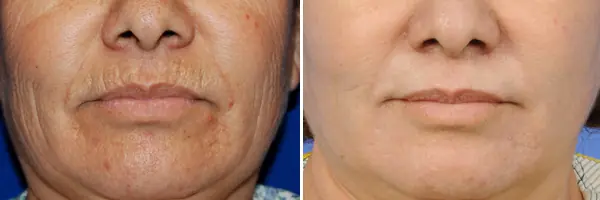
Carbon peeling combines both therapeutic and rejuvenating effects. Its uniqueness is that the procedure takes place in two stages. At the first stage, the skin is cleansed and a special carbon mask is applied to it. Its task is to absorb all decay products and impurities on the skin. The second stage takes place using a laser. It acts on the carbon mask and evaporates it, thereby deeply cleansing the skin and stimulating cells to renew, produce collagen and elastin.
Carbon peeling can solve problems such as:
- small wrinkles on the face;
- sagging skin;
- increased sebum secretion;
- comedones;
- acne;
- unhealthy complexion;
- skin pigmentation.
Carbon peeling is recommended as a gentle method; it can be combined with other anti-aging procedures. This is a universal way to maintain and improve the condition of the skin, while carbon peeling has no clear age restrictions.
Reasons for the rapid appearance of wrinkles on the forehead
It is believed that wrinkles on the forehead are a sign of age. Every year their number, depth and length increase. But in many cases, the first wrinkles appear at a fairly young age; in some cases, they appear even before the age of 20.
Collagen and elastin are compounds that retain moisture, swell and make the skin elastic and smooth. With age, these fibers become smaller and retain less moisture. The skin loses elasticity and becomes prone to wrinkles and damage. The first wrinkles appear around the eyes and on the forehead.
No matter how much you would like to prevent their occurrence, this is not always possible. In other cases, the appearance of wrinkles is entirely the fault of the person himself.
Photos Before and After contouring with Restylane:
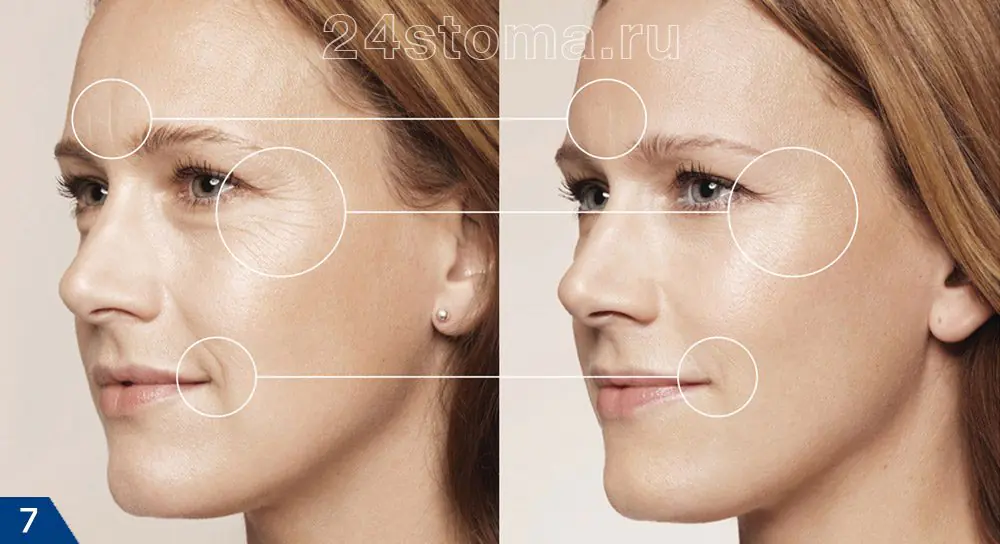
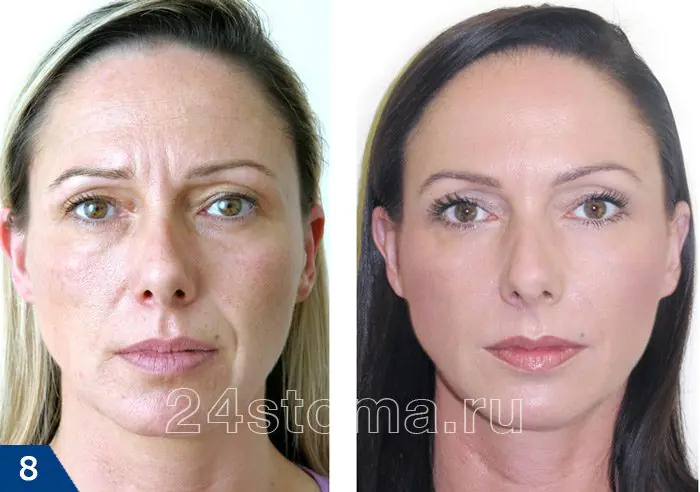
- Laser skin resurfacing (Fig.9-10) –
allows you to remove dead outer layers of skin, reducing the depth of wrinkles, and also helps to increase skin elasticity by stimulating the production of collagen and elastin. Read more about this method in the article: “Fractional laser correction of wrinkles”
- Microdermabrasion –
A non-surgical microdermabrasion procedure exfoliates the surface dead layer of skin, thereby reducing the depth of wrinkles. This may help get rid of very fine and shallow lines, but for deeper and wider wrinkles the procedure will not be effective. An alternative to microdermabrasion can also be a medium chemical peeling technique.
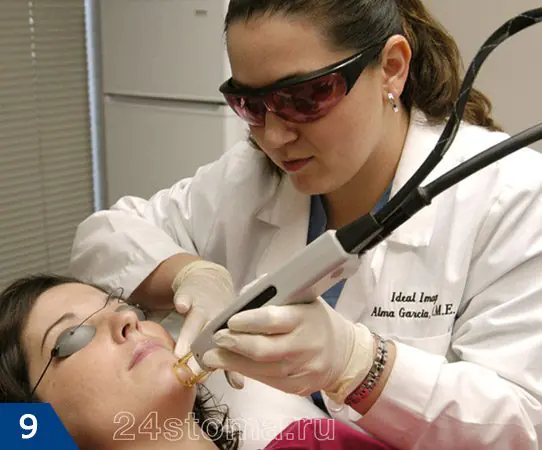
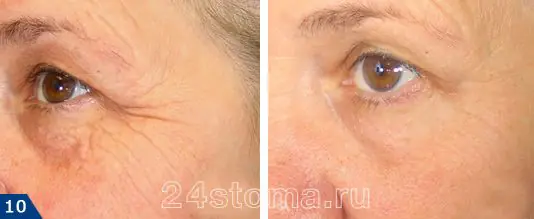
Removing wrinkles on the forehead: surgical methods
At the moment, there are two main methods of surgical correction of wrinkles in the forehead. These techniques include the traditional open surgical technique, and the endoscopic forehead lift technique, which appeared around 1990 (due to the advent of new modern endoscopic equipment).
If you need a brow lift to lift your eyebrows, then these surgical techniques can successfully do this (Fig. 15). Endoscopic brow lift is less traumatic than surgery performed using the traditional open method.
The incision with the open technique is made along the upper part of the forehead (Fig. 11). The incision can be made either in the hair or along the open part of the forehead - just below the level of hair growth. Then the skin of the forehead is peeled off, stretched, the excess is excised and sutured (Fig. 12-13).
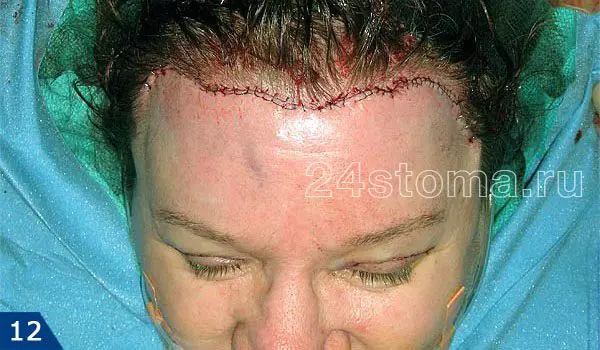
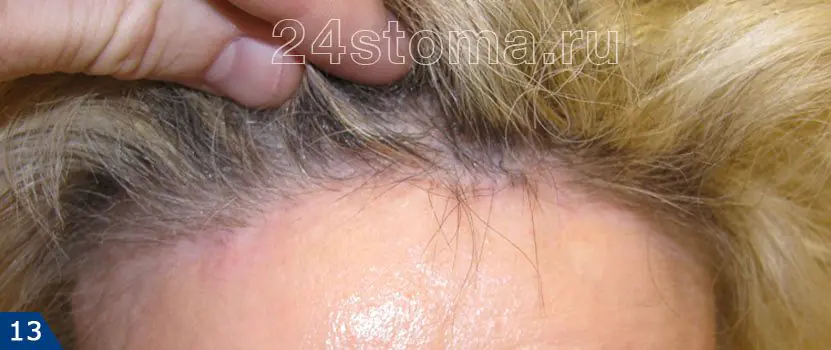
Pros -
The open technique is characterized by a more pronounced effect after surgery and a longer duration of the achieved result. Another advantage of the open technique is that the operation allows you to forcefully raise or lower the hairline.
Minuses -
however, with the open technique, the patient will experience more severe scalp numbness compared to the endoscopic technique, as well as more severe pain after surgery. It is also necessary to take into account the more pronounced length of the incision with this technique, as well as the fact that hair loss along the scar is possible.
Open forehead lift: Before and After photos
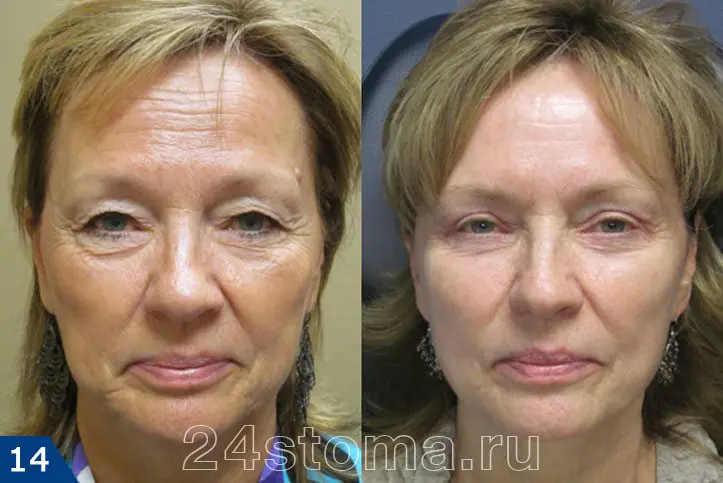
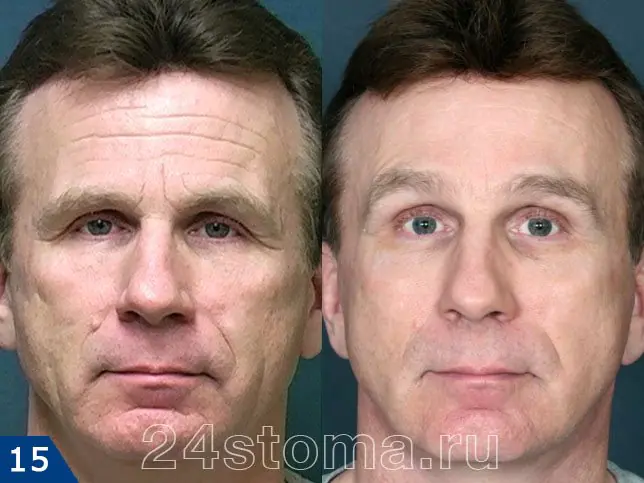
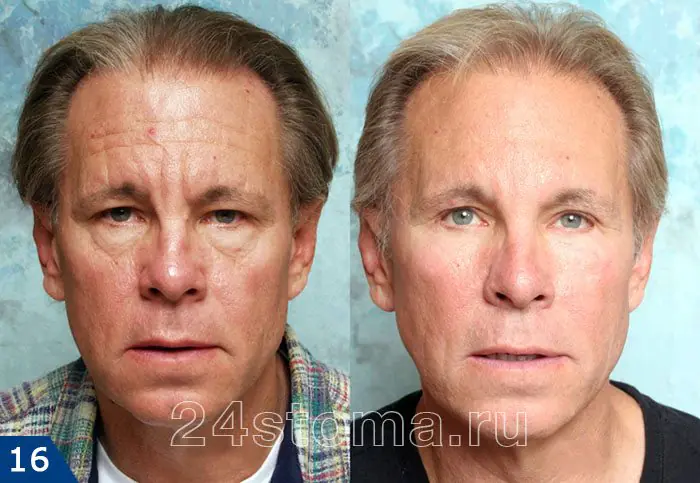
The main difference from the open technique is that the lift is performed through small incisions behind the hairline using a surgical endoscope (Fig. 17-18). The procedure loosens the skin of the forehead, lifts the eyebrows and smoothes out forehead wrinkles, stretching weakened forehead tissue upward to the top of the head.
Thus, the operation allows:
- raise the eyebrows (if there is sagging of the eyebrows),
- smoothes deep furrows and wrinkles in the forehead area,
- softens wrinkles between the eyebrows, allowing them to make the look less frowning.
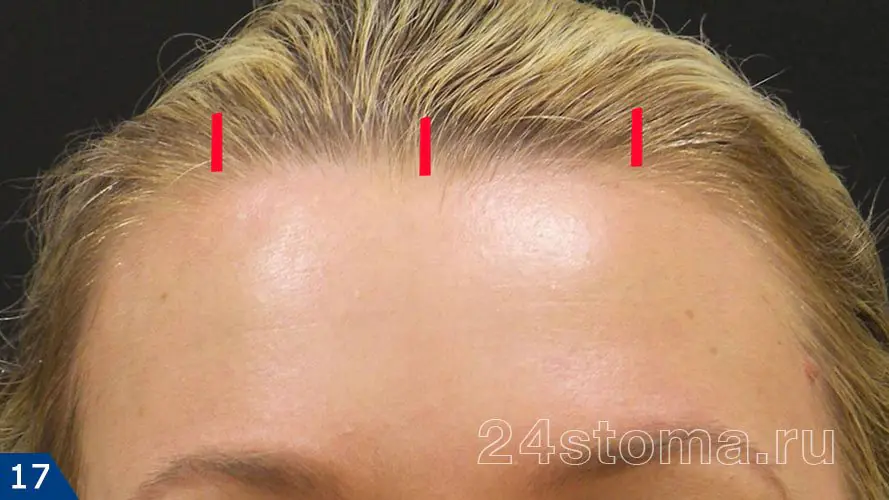
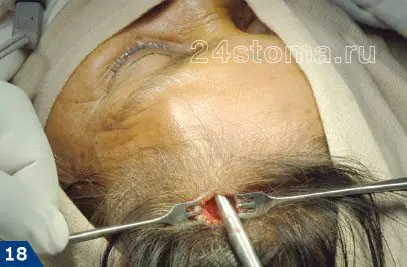
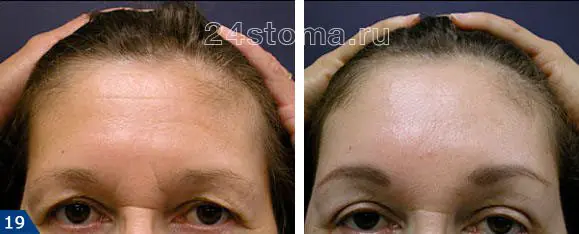
Pros -
During an endoscopic brow lift, only a few small incisions will be made behind the hairline. Thus, the endoscopic technique is characterized by shorter incisions, less bleeding during surgery and faster healing. Numbness is usually less pronounced or absent, and painful symptoms are minimal.
Minuses -
however, this technique is inferior to the traditional open technique in terms of the degree of forehead lift and the duration of maintenance of the achieved results. Although the number of incisions is minimal, in some cases there may be slight hair loss along the scars.
We hope that our article on the topic: How to remove wrinkles from the forehead and between the eyebrows was useful to you!
">



